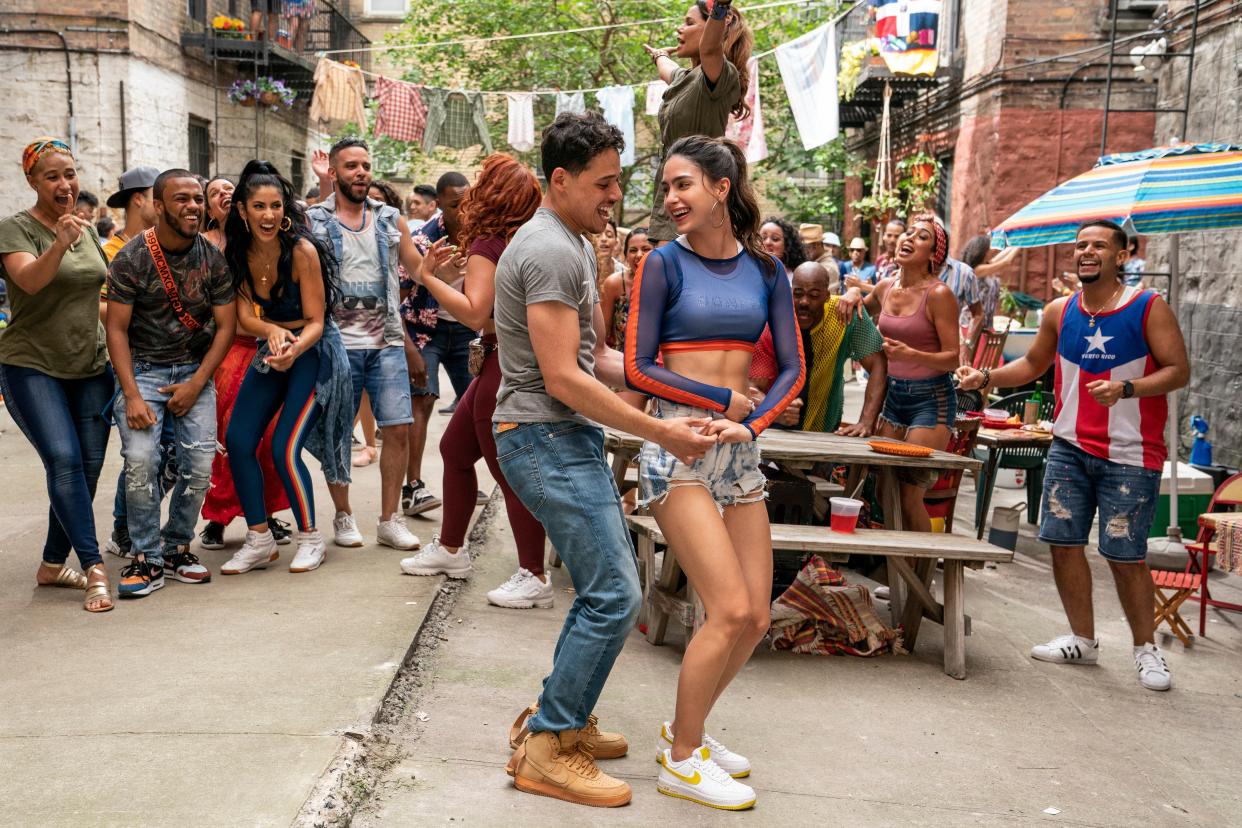In the Heights Is the Epic Celebration of Latinx Culture We All Needed

the heights.dng
Photo: Courtesy of Macall PolayI was just about thirteen when I fell in love for the first time. His name was Salvatore Di Vita. He was a small-town movie projectionist and I was hopelessly infatuated. Never mind that he lived an ocean away in Italy or that he was actually played by an actor named Marco Leonardi. I could’ve cared less that he was a fictitious character in a film. That hot summer afternoon, in the cool dark of the movie theater watching Cinema Paradiso for the first time, the love I felt for Salvatore was undoubtedly real. I’d been bewitched, enveloped in the stunning imagery of Italy, the heartbreaking closeups of Salvatore’s face, the poignant score. And, one glance at the audience, all of us tear-stained or sobbing, let me know I wasn’t alone.
From that day on I was completely hooked. Not on Salvatore—though the crush is evergreen—but on going to the movies. Over the last year and a half, I’d watched scores and scores of films at home, but there was little I missed during the pandemic as much as going to the movies. So, for my first trip to the cinema, I didn’t want to see just anything. I wanted to see something worthy of the format itself. Something that, after a year of going nowhere and time being meaningless, commanded the urgency of getting myself to a set place at a set time, to sit amongst strangers, not just to watch a movie, but to drown in it. And, after a very hard and challenging year, experience a bit of magic. Last night, that bit of magic was In the Heights.
In the Heights is the film adaptation of Lin-Manuel Miranda’s first big Broadway musical. It’s the story—the celebration really—of one block and its inhabitants in Washington Heights, a predominantly Latinx, but rapidly gentrifying enclave in upper Manhattan. Its multi-national, multi-generational narrative is perhaps one of the most ambitiously successful attempts to capture the culture, concerns, and diversity that comprises the Latinx identity. So, of course, I wanted to be there for The Culture. To celebrate, as a Latina, something For Us, By Us. To put my money where my mouth is and make an occasion out of the fact that for the first time, possibly ever, an American Musical about Latinx people authored by one of us, with songs written by one of us, and then sung by many of us, got the kind of budget and release I had begun to think only Marvel movies could merit.
One of the things that makes going to the cinema such a powerful experience is that it offers the attendee a highly unique value proposition: the chance to have a fully personal encounter with a piece of art while concurrently partaking in communal catharsis. You can be alone without ever being lonely at the movies. Laughter, tears, anger all become shared experiences in the darkness of the theater. It hit me hard, in a deeply personal way, when Nina (played by Leslie Grace) sang about her feelings of inadequacy as a new student at Stanford. But while I suspect I was one of the few Nuyoricans who suffered imposter syndrome at an Ivy League college in the predominantly white audience of my Brooklyn theater, when I looked around there was hardly a dry eye in the house. Our hearts may have been soaring for different reasons during the ecstatic celebration of Latinidad that was Carnaval del Barrio, but the collective sense of joy was no less valid. That too, is a part of the magic of the movies. The way in which the act of movie-going adds new layers of meaning to the art of the film itself.
I found myself thinking about Salvatore from Cinema Paradiso again last night. Moments into In the Heights, Anthony Ramos’s open, honest face was before me, as big as an apartment building. I couldn’t help but imagine how many 13-year-olds in theaters across the country were falling in love for the first time with a Dominican bodeguero named Usnavi from Washington Heights. As they see him fight for his neighborhood, for the love of his life, for his sueñito. I wondered if perhaps they were seeing their own experience so gorgeously rendered on that massive screen. Or if, like Salvatore was to me, Usnavi was from a world away, part of a culture they had not yet seen or known, but that he would live in their hearts forever. And, I found myself hoping that, like me, they also fell in love with the very idea of going to the movies itself.
Originally Appeared on Vogue

